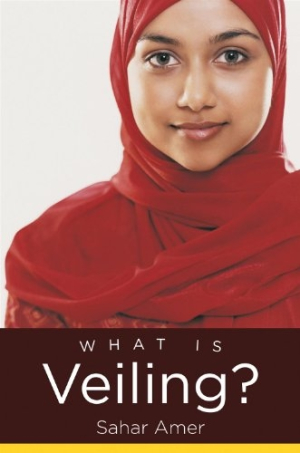
What Is Veiling?
In Amer’s able hands, the often feminist, anti-colonist nature of veiling is brought to light.
Preeminent professor of Islamic studies Sahar Amer returns with a work which seeks to demystify a looming symbol of Islam: the veil. In prose that is approachable and sympathetic, and with research spanning nations and centuries, Amer’s project manages to be both comprehensive and illuminative.
Amer’s presentation of the subject begins in a logical place, by examining veiling in the context of the Qur’an. She reveals that it’s not a significant topic. Rather, the tradition of modest dress arose later, among those who translated and interpreted the Qur’an and hadith, and as a matter of jurisprudence. Such chapters invaluably introduce Muslim history and practice in a manner useful to beginning and veteran historians alike, placing the veil in context with elegance.
The rest of Amer’s project works to challenge Western notions—those which label veiled Muslim women “oppressed” and call societies that seek to “liberate” them. Amer shows that the way the West has traditionally approached the veil has the dual effect of sexualizing and rendering Muslim women alien, not to mention uniform.
Cultural histories from across the Muslim world are made to stand in contrast to such monochrome presentations. Amer explores progressive Islam in both modern and early incarnations, showing that the veil has often been assumed as a means of self-expression and protection. The idea that the veil is most often prescriptive is neatly turned on its head.
Contemporary veiling, Amer shows, is more often a means of asserting individuality and choice or solidarity with a global sisterhood. This is particularly true of veiling in cultures hostile to it: “[The veil] is a mark of inner strength, courage, and faith precisely because it is so misunderstood.” Later chapters explore current trends in hijab-friendly fashion and intelligent cultural portrayals, highlighting additional forms of veiled empowerment.
Amer’s project successfully controverts the erasure of Muslim women’s experiences, which tends to occur in discussions of the veil, both in nations that require its most conservative expressions and in those that regard it as a symbol of oppression. Her work honors diversity among Muslim women in all national contexts, challenging what she calls the violence of their silencing.
What Is Veiling? is an important work that stands to advance multicultural conversations and is a must-read for all those who wish to intelligently approach the subject of Muslim women and autonomy.
Reviewed by
Michelle Anne Schingler
Disclosure: This article is not an endorsement, but a review. The publisher of this book provided free copies of the book to have their book reviewed by a professional reviewer. No fee was paid by the publisher for this review. Foreword Reviews only recommends books that we love. Foreword Magazine, Inc. is disclosing this in accordance with the Federal Trade Commission’s 16 CFR, Part 255.
